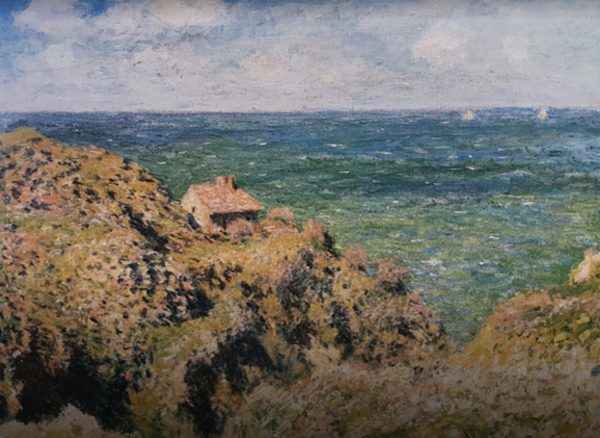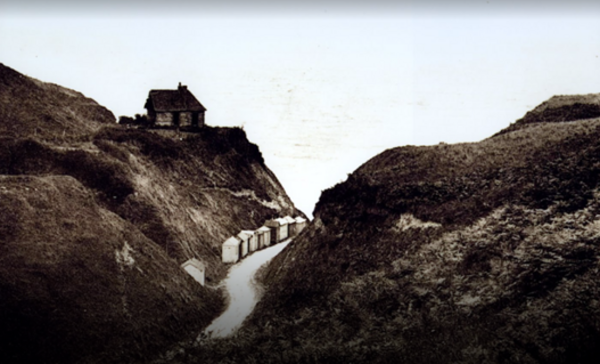At a time when Europe was affected by Napoleon Bonaparte's continental blockade, customs officers' paths emerged as part of the continental system. Originally, these huts, also known as thatched huts, were observation points on the coast for customs officials or accommodation for fishermen. But what was a strategic measure for Napoleon inspired Romantic and Impressionist artists to create masterpieces. The view of the customs huts as one of the earliest and centrally planned customs border controls in Europe is particularly fascinating.
The famous Impressionist painter Claude Monet was one of these artists whose works capture the beauty and atmosphere of these customs officers' huts. Monet, known for his ability to paint nature as he saw it, painted a series of paintings that had the customs huts as their main subject. Between 1896 and 1897, he resumed his series on this theme, creating a total of 17 paintings saturated with desirable atmospheric effects.
The customs hut in Petit-Ailly, located about halfway between the Varengeville church and Pourville beach, served as the backdrop for many of these paintings. In Monet's works, the hut can be seen from different perspectives, resulting in a variety of views and moods influenced by the changing light conditions of the day.
But how do these artistic masterpieces relate to the modern world of trade and customs clearance? The answer lies in the constancy of the need for efficient customs and trade processes throughout time. Even then, trade played a crucial role in the economy and control over the movement of goods was of paramount importance to states. Today, in the age of globalization, the smooth handling of customs and trade processes is essential for companies to gain a competitive edge and meet legal requirements.
This is where MIC comes into play. MIC Global Trade Management (GTM) software offers companies the ability to optimize their international customs and trade processes and ensure regulatory compliance. Just as 19th century impressionist artists explored the effects of light and color on nature, MIC software enables companies to understand and efficiently navigate the complexities and demands of global trade.
By helping companies optimize their customs and trade processes, MIC helps increase efficiency, reduce costs and strengthen global competitiveness - a goal that artists of the past also pursued in their depiction of customs huts: to capture the beauty and meaning of everyday life, whether through the lens of art or through the processes of trade and customs clearance.



